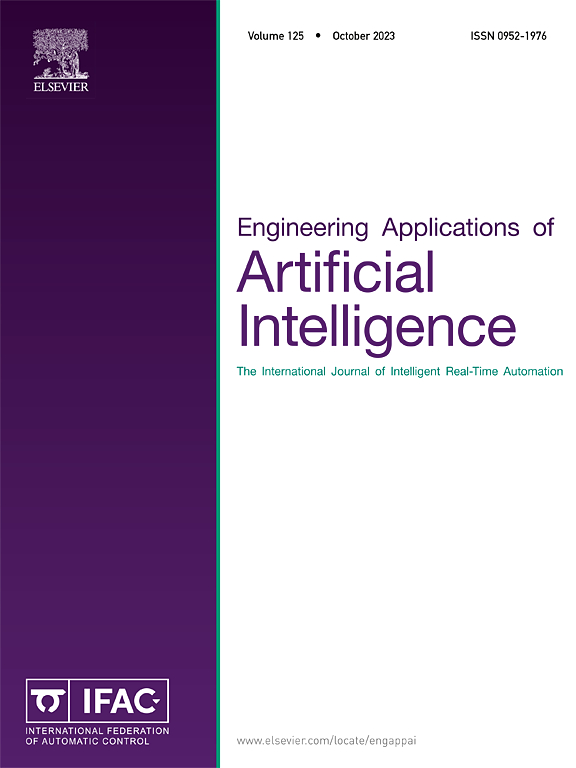Ensemble machine learning models for estimating mechanical curves of concrete-timber-filled steel tubes
IF 8
2区 计算机科学
Q1 AUTOMATION & CONTROL SYSTEMS
Engineering Applications of Artificial Intelligence
Pub Date : 2025-06-04
DOI:10.1016/j.engappai.2025.111234
引用次数: 0
Abstract
The use of concrete-timber-filled steel tubes (CTFSTs) as composite structural elements in buildings is gaining attraction among researchers due to their positive structural behavior and high load-bearing capacity. The combination of steel, concrete and timber materials improves energy absorption and ductility making CTFSTs a promising choice for modern construction. However, finding the mechanical properties of CTFSTs is a challenge during the design process due to the complexity of predicting behavior. Reliable modeling of these interactions is essential for an optimal design, which requires extensive experimental data and advanced computational methodologies. Therefore, this study proposed ensemble machine learning (ML) models for estimating load-displacement and stress-strain curves as well as the maximum axial capacity and elastic stiffness of CTFSTs. The results confirm the reliability of ensemble ML models for predicting the elastic stiffness and the maximum axial capacity of CTFST specimens with error percentages of 0.57 and 0.72, respectively. In addition, proposed ensemble ML models were used to estimate axial load-displacement and stress-strain curves of CTFSTs having different shapes of timber, which their curve fitting ability were superior compared to other ML models (i.e., accuracy of 97.6 %). Having ensemble ML models validated by experimental tests, a graphical user interface (GUI) tool is prepared for the preliminary evaluation of CTFST specimens, which can ease the way for reducing the experimental costs.

预估钢管混凝土力学曲线的集成机器学习模型
混凝土-木结构钢管(CTFSTs)由于其良好的结构性能和较高的承载能力,在建筑中作为复合结构构件的应用越来越受到研究人员的关注。钢、混凝土和木材材料的结合提高了能量吸收和延展性,使ctfst成为现代建筑的一个有前途的选择。然而,由于预测性能的复杂性,在设计过程中发现ctfst的力学性能是一个挑战。这些相互作用的可靠建模对于优化设计至关重要,这需要大量的实验数据和先进的计算方法。因此,本研究提出了集成机器学习(ML)模型,用于估计CTFSTs的载荷-位移和应力-应变曲线以及最大轴向容量和弹性刚度。结果证实了集合ML模型预测CTFST试件弹性刚度和最大轴向承载力的可靠性,误差百分比分别为0.57和0.72。此外,本文提出的集成ML模型用于估计不同木材形状ctfst的轴向载荷-位移和应力-应变曲线,其拟合能力优于其他ML模型(即精度为97.6%)。通过实验测试验证了集成ML模型,为CTFST样品的初步评估准备了图形用户界面(GUI)工具,这可以简化降低实验成本的方法。
本文章由计算机程序翻译,如有差异,请以英文原文为准。
求助全文
约1分钟内获得全文
求助全文
来源期刊

Engineering Applications of Artificial Intelligence
工程技术-工程:电子与电气
CiteScore
9.60
自引率
10.00%
发文量
505
审稿时长
68 days
期刊介绍:
Artificial Intelligence (AI) is pivotal in driving the fourth industrial revolution, witnessing remarkable advancements across various machine learning methodologies. AI techniques have become indispensable tools for practicing engineers, enabling them to tackle previously insurmountable challenges. Engineering Applications of Artificial Intelligence serves as a global platform for the swift dissemination of research elucidating the practical application of AI methods across all engineering disciplines. Submitted papers are expected to present novel aspects of AI utilized in real-world engineering applications, validated using publicly available datasets to ensure the replicability of research outcomes. Join us in exploring the transformative potential of AI in engineering.
 求助内容:
求助内容: 应助结果提醒方式:
应助结果提醒方式:


